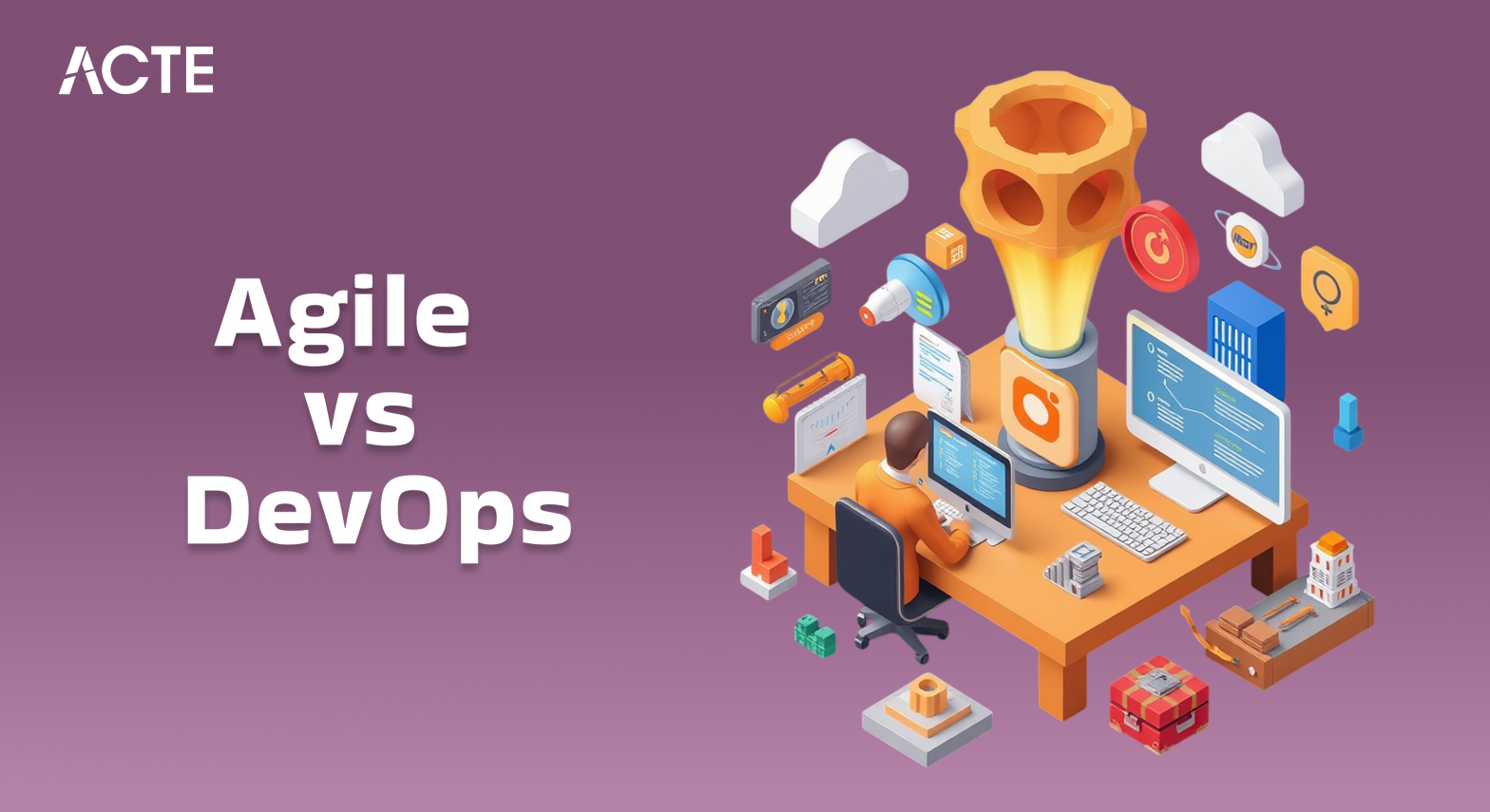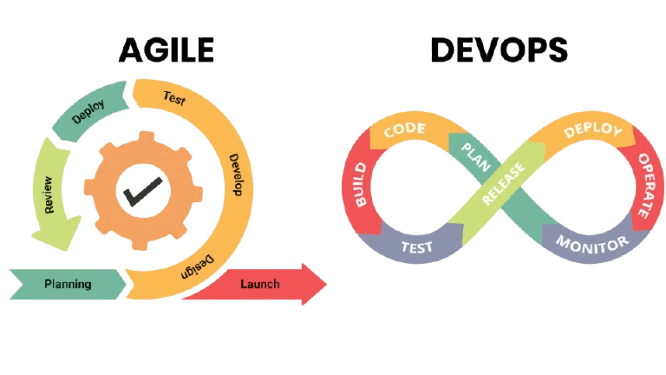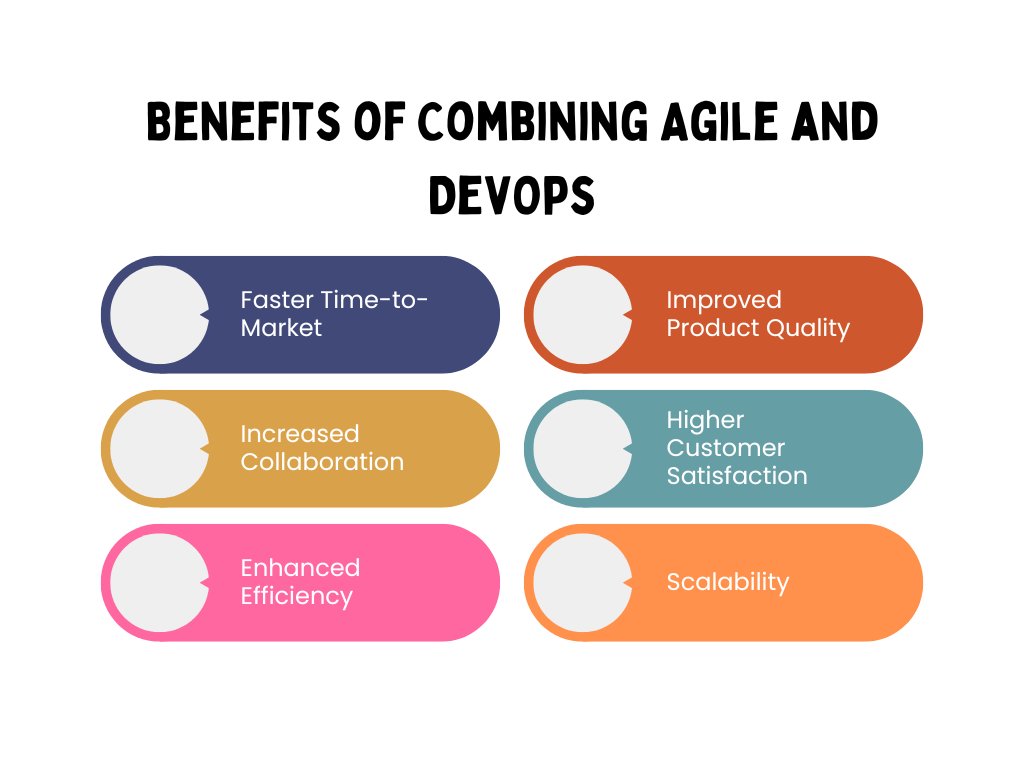
- Introduction
- What is Agile?
- What is DevOps?
- Key Differences Between Agile and DevOps
- Synergies Between Agile and DevOps
- Integrating Agile with DevOps Practices
- Benefits of Combining Agile and DevOps
- Conclusion
Introduction
In today’s fast-paced software development landscape, organizations are constantly looking for ways to accelerate the delivery of high-quality products while maintaining flexibility and collaboration. Agile and DevOps are two prominent methodologies that have transformed the way teams approach software development, each offering distinct yet complementary advantages. While Agile focuses on iterative development and customer feedback, DevOps bridges the gap between development and operations to enable faster, more reliable software delivery, a key concept explored in the Devops Course. By combining these approaches, organizations can streamline workflows, enhance team coordination, and improve overall efficiency. In this article, we explore the relationship between Agile and DevOps, their key differences, synergies, and how integrating both practices can lead to faster time-to-market, improved collaboration, and higher product quality. Understanding how these methodologies can work together allows teams to leverage their full potential and achieve greater success in the software delivery lifecycle.
Are You Interested in Learning More About Devops? Sign Up For Our Devops Online Training Today!
What is Agile?
- Agile focuses on iterative software development, ensuring that each sprint delivers a potentially shippable product.
- DevOps focuses on collaboration and automation between development and operations to enable faster and more reliable delivery of software. Scope:
- Agile is primarily concerned with the development process, ensuring that products evolve iteratively and respond to customer feedback.
- DevOps includes not only development but also the deployment and operations stages, aiming to reduce time between development and production release. Team Involvement:
- Agile involves primarily development teams and product owners, with key insights into collaboration and automation covered in the Devops Course.
- DevOps involves both development and operations teams, working together throughout the entire software lifecycle. Delivery:
- Agile delivers small, incremental changes in short cycles, usually in a series of sprints.
- DevOps automates the delivery pipeline to ensure software is deployed continuously and rapidly, often through CI/CD. Tools and Practices:
- Agile uses tools for project management, like Jira or Trello, and practices like daily stand-ups and retrospectives to facilitate team collaboration.
- DevOps relies on tools for automation and continuous delivery, such as Jenkins, Docker, and Kubernetes, alongside practices like automated testing and monitoring.
- Continuous Feedback: Implement continuous feedback loops by using agile retrospectives and DevOps monitoring to assess both product quality and deployment efficiency. This allows teams to quickly identify issues and make necessary adjustments to improve both development and delivery processes.
- Automated Testing: Combine Agile’s iterative development cycles with automated testing in DevOps to ensure that each increment of the product is thoroughly tested before release. Automated tests help maintain consistent quality and catch errors early, reducing the risk of defects in production.
- Continuous Integration/Continuous Delivery (CI/CD): Agile sprints can be paired with DevOps practices like CI/CD pipelines to automate the integration and delivery process, ensuring that code is continuously deployed and tested. This enables frequent releases, faster feedback, and quicker delivery of features and bug fixes, while leveraging solutions like Azure Data Box Secure Data Transfer Solution for secure and efficient data movement.
- Collaborative Culture: Foster a culture of collaboration between development, operations, and product teams. Agile ceremonies like daily stand-ups and sprint planning can be integrated with DevOps’ collaborative approach to deployment and monitoring, promoting transparency and shared responsibility.
- Infrastructure as Code (IaC): Use Infrastructure as Code IaC practices from DevOps alongside Agile practices to ensure that the infrastructure needed to run the software is version-controlled and can be quickly replicated across environments. This approach allows for consistency, scalability, and easier management of environments throughout the development lifecycle.
- Faster Time-to-Market: The combination of Agile’s iterative development and DevOps’ automated delivery allows products to be delivered to market faster, with new features being continuously deployed. By shortening development cycles and automating deployment, organizations can release products quickly and adapt to market changes more efficiently. This leads to a competitive edge and quicker response to customer needs.
- Improved Product Quality: By integrating automated testing and continuous monitoring, Agile and DevOps ensure that the product is high-quality, and any issues are detected and resolved quickly. Continuous integration ensures that code is always in a deployable state, reducing the likelihood of defects making it to production. Furthermore, automated testing ensures consistent quality across all releases.
- Increased Collaboration: Agile and DevOps together promote a collaborative culture between all stakeholders, from developers to operations teams, ensuring that everyone is aligned on project goals. This collaboration reduces misunderstandings, improves team morale, and fosters a shared responsibility for both development and operational success. It also enhances communication, helping teams resolve issues quickly.
- Higher Customer Satisfaction: The ability to release software continuously and gather real-time feedback ensures that customers get the features they need faster, leading to higher satisfaction, a process that can be streamlined with tools like Understanding AWS Step Functions. By responding to feedback iteratively, organizations can ensure their product is constantly evolving to meet customer demands, enhancing their experience and loyalty. This leads to higher retention rates and a stronger brand reputation.
- Enhanced Efficiency: Automation in both testing and deployment reduces manual effort, ensuring that teams are more productive and can focus on innovation rather than routine tasks. By minimizing human intervention, teams can avoid errors and accelerate delivery. Automation also enables teams to handle repetitive tasks at scale, improving consistency and freeing up time for higher-value activities.
- Scalability: The integration of Agile and DevOps enables organizations to scale their development and deployment processes efficiently, accommodating growing product demands without sacrificing quality or speed. As businesses expand, both the Agile and DevOps methodologies allow them to maintain high-quality standards and efficient workflows, regardless of the project’s size. This scalability ensures organizations can meet both current and future needs effectively.
Agile is a methodology used in project management and software development that emphasizes flexibility, collaboration, and rapid delivery. Agile focuses on delivering small, incremental improvements to a product, with a strong emphasis on continuous feedback and iterative progress. It originated in the software development industry, primarily as a response to the inefficiencies of traditional, rigid waterfall development processes. The Agile Manifesto, introduced in 2001, outlines the key values and principles of the methodology: individuals and interactions over processes and tools, working software over comprehensive documentation, with modern technologies like Docker Containers on AWS facilitating agile development through containerization and efficient deployment. At its core, Agile aims to create an environment where teams can respond to customer needs and market changes quickly and efficiently. Instead of a single long development cycle, Agile encourages breaking down projects into smaller, manageable chunks or “sprints,” each typically lasting from one to four weeks. These sprints focus on delivering tangible, working pieces of software that can be tested and improved upon during subsequent sprints. The regular iteration allows teams to assess progress, adapt to changing requirements, and continuously improve both the product and the process.
What is DevOps?
DevOps is a set of practices, cultural philosophies, and tools that integrate software development (Dev) and IT operations (Ops) teams to improve the efficiency and quality of software delivery. The main objective of DevOps is to shorten the software development lifecycle and deliver high-quality software more frequently, a goal that can be enhanced through AWS IoT Solutions for Smarter, Connected Innovations, enabling seamless integration and automation in connected environments. DevOps focuses on automation, collaboration, and monitoring throughout the software development process, from development to testing, deployment, and operations.

By fostering a culture of collaboration between development and operations teams, DevOps breaks down silos and ensures that both groups work together to achieve common goals. In a traditional setup, development teams create software and hand it off to operations teams for deployment and maintenance. In DevOps, the lines between these two functions blur, allowing for faster and more continuous delivery of software. Automated testing, continuous integration, continuous delivery (CI/CD), and monitoring are all key elements of the DevOps approach. The goal is to streamline workflows, reduce errors, and continuously enhance the product based on real-time feedback.
To Earn Your Devops Certification, Gain Insights From Leading Devops Experts And Advance Your Career With ACTE’s Devops Online Training Today!
Key Differences Between Agile and DevOps
-
Focus Area:
Synergies Between Agile and DevOps
Agile and DevOps, while distinct, can be highly complementary when used together. Agile enables teams to focus on the incremental development of the product, ensuring that customer feedback is quickly incorporated into the process. Meanwhile, DevOps provides the infrastructure and tools to automate the process of delivering these incremental changes to production as quickly and reliably as possible. The synergy between Agile and DevOps lies in the fact that both methodologies prioritize collaboration and speed, much like the Serverless Computing Benefits & Uses, which enable faster development and scalable applications without managing infrastructure. Agile focuses on delivering features quickly and iteratively, while DevOps ensures that these features are deployed and maintained in a streamlined manner. By adopting both Agile and DevOps, organizations can speed up not only the development phase but also the deployment and operations stages, ensuring that high-quality software reaches customers faster and more efficiently. Additionally, Agile’s emphasis on feedback loops aligns well with DevOps’ emphasis on continuous monitoring. Both encourage teams to assess and adapt, whether by revising the product in response to customer feedback or by fine-tuning deployment processes based on real-time data from production environments.
Gain Your Master’s Certification in Devops by Enrolling in Our Devops Masters Course.
Integrating Agile with DevOps Practices

Benefits of Combining Agile and DevOps
Preparing for a Devops Job Interview? Check Out Our Blog on Devops Interview Questions & Answer
Conclusion
In conclusion, the integration of Agile and DevOps practices offers a powerful approach to modern software development. While Agile provides the framework for iterative progress and continuous feedback, DevOps ensures that these developments are deployed and maintained efficiently through automation and collaboration across teams. Together, they enable organizations to respond quickly to changing customer needs, improve product quality, and reduce time-to-market. By adopting both methodologies, teams can foster a culture of collaboration, innovation, and continuous improvement, ultimately delivering higher-quality software faster and more reliably, as emphasized in the Devops Course. This collaboration not only streamlines the development process but also enhances communication and alignment between development, operations, and business teams. Embracing the synergies between Agile and DevOps is key to staying competitive in today’s rapidly evolving software landscape, allowing organizations to meet customer expectations and scale efficiently. The combined approach ensures a sustainable, adaptable, and future-proof strategy for continuous growth and success in the software industry.





